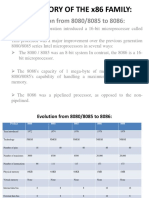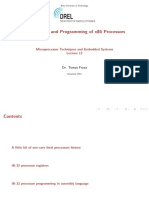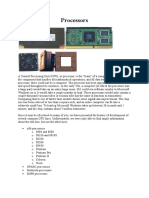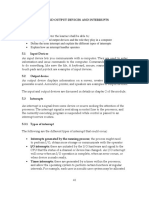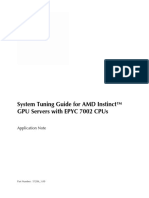0% found this document useful (0 votes)
90 views4 pagesMicroprocessor - Intel x86 Evolution and Main Features
The document outlines the evolution of Intel's x86 microprocessor architecture from the 8086 to the Core 2, highlighting key features and advancements in each generation. It discusses the advantages of compatibility, performance, versatility, and broad industry support, as well as disadvantages such as a complex instruction set, increased power consumption, heat dissipation, and cost. A comparison table of major features across different x86 microprocessors is also provided.
Uploaded by
ezekiel nyamuCopyright
© © All Rights Reserved
We take content rights seriously. If you suspect this is your content, claim it here.
Available Formats
Download as DOCX, PDF, TXT or read online on Scribd
0% found this document useful (0 votes)
90 views4 pagesMicroprocessor - Intel x86 Evolution and Main Features
The document outlines the evolution of Intel's x86 microprocessor architecture from the 8086 to the Core 2, highlighting key features and advancements in each generation. It discusses the advantages of compatibility, performance, versatility, and broad industry support, as well as disadvantages such as a complex instruction set, increased power consumption, heat dissipation, and cost. A comparison table of major features across different x86 microprocessors is also provided.
Uploaded by
ezekiel nyamuCopyright
© © All Rights Reserved
We take content rights seriously. If you suspect this is your content, claim it here.
Available Formats
Download as DOCX, PDF, TXT or read online on Scribd
/ 4


